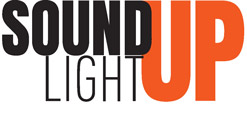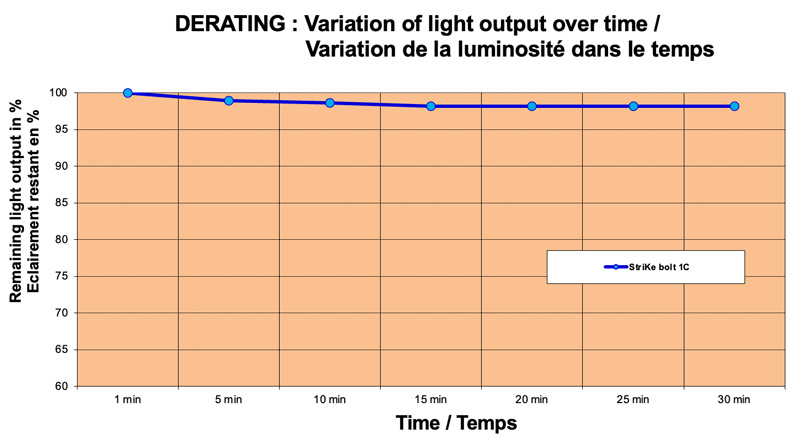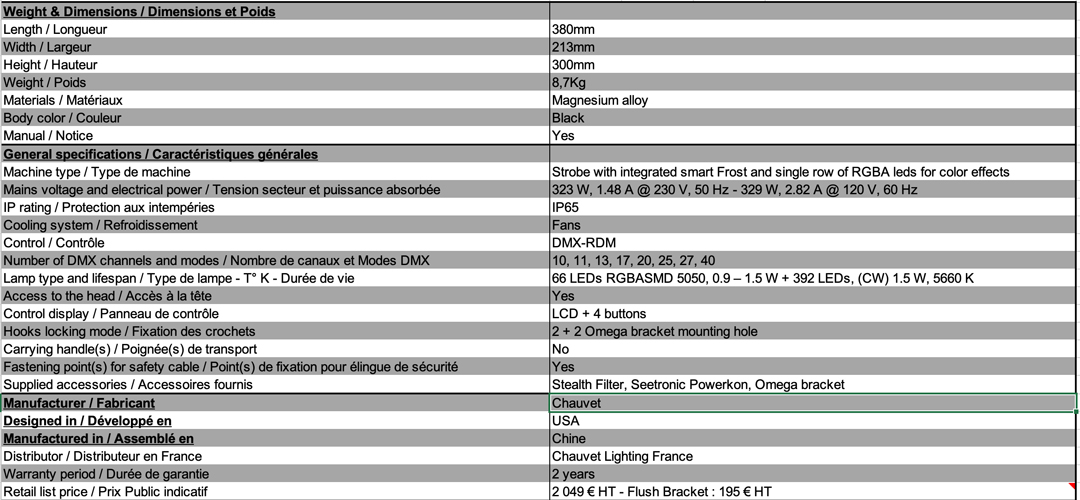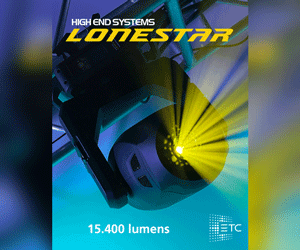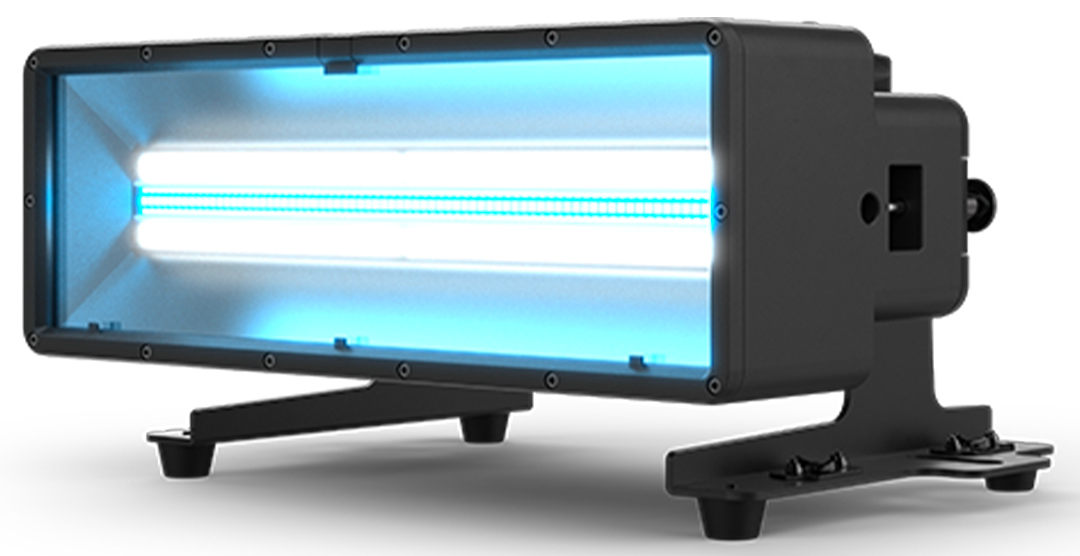
If Chauvet offered you a new fixture, would you prefer a Strobe, a Blinder, or a small matrixable LED bar? The choice is indeed complicated… Otherwise, I suggest you discover the Strike Bolt 1C which has all these possibilities in a single source! We tested it in the Chauvet showroom.
Nowadays, beyond the price, there are three essential points in choosing a source: its size, its light output, and its versatility. This last point has become essential when we talk about an effects fixture. The more specific the use, the less the fixture will be chosen for the job.
We must therefore multiply the possibilities to increase the number of rentals and the duration of its appeal. The Chauvet brand has understood this perfectly and even more. Indeed, the Strike Bolt 1C is a versatile fixture with different functions, its uses, and also in its integration as shown in the following video.
Video presentation
On the outside
The design inspires robustness and efficiency. No “frills”, and lots of lines for a few rounded edges emphasize simplicity and quality. I like the idea of only having this rectangle of light without any other elements when you are facing the fixture.
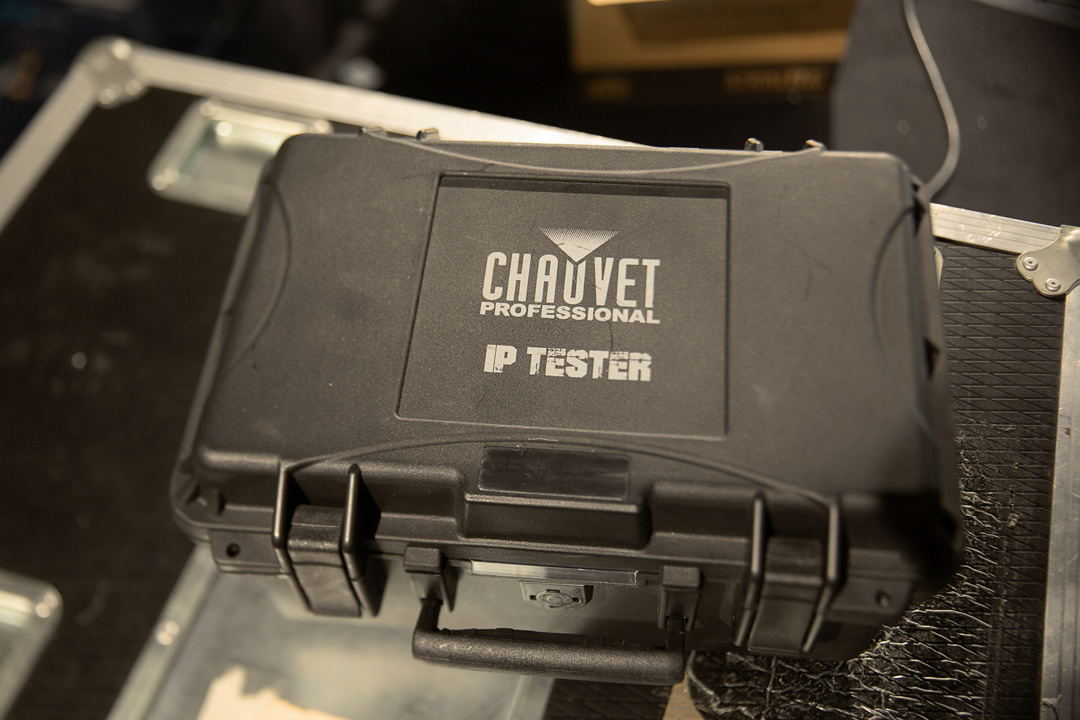
The start of versatility lies in its ability to be installed in all positions and on all stages/venues thanks to its IP65 certification. As a reminder, the 6 means that the device is protected against intrusion and dust penetration. The second number, here 5, indicates protection against splashes of water from a hose. So no immersion, even for a short time, and it should not be cleaned with a high-pressure washer.
The fixture’s body is made of magnesium alloy and the IP proofing is obtained with seals and an increase in pressure inside the fixture. There are of course measurements that need to be respected, that is why a device called IP Tester which recognizes the source and applies appropriate pressure. It also checks the correct sealing after reassembly. This is the huge advantage of this system. The downside is that increasing the IP value always leads to a slight excess weight. The Strike Bolt weighs 8.7 kg.
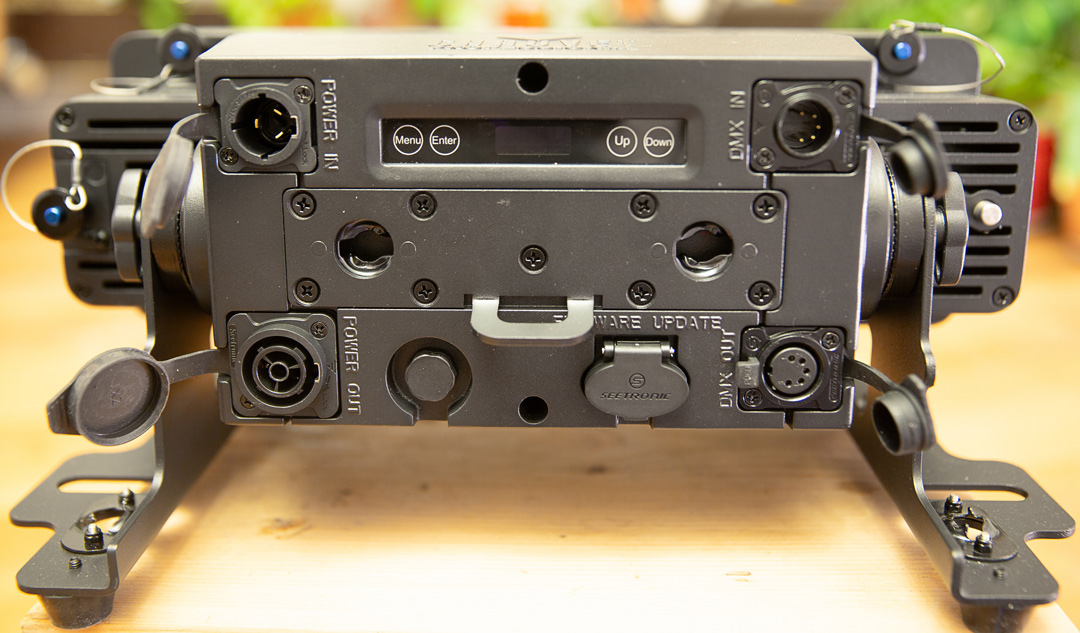
What is appreciated is that everything has been done to have the essentials at the best price without compromising on quality. We see that all the costly frills have been avoided to offer optimized essential elements. This is visible with the rear panel of the fixture.
Here are the 2 Seetronic Powerkon IP65 connectors to power the source and daisy-chain to other fixtures. There are of course two XLR5 IP 65 sockets for the DMX signal and also a USB port for software updating. The last connector allows you to control and adjust the pressure in the fixture via the IP Tester case.
There are also 4 buttons on either side of the screen. The latter is the only negative point in my opinion. It is clear and bright but so small that it is rather difficult to read the information. A slightly larger screen would have simplified the settings.
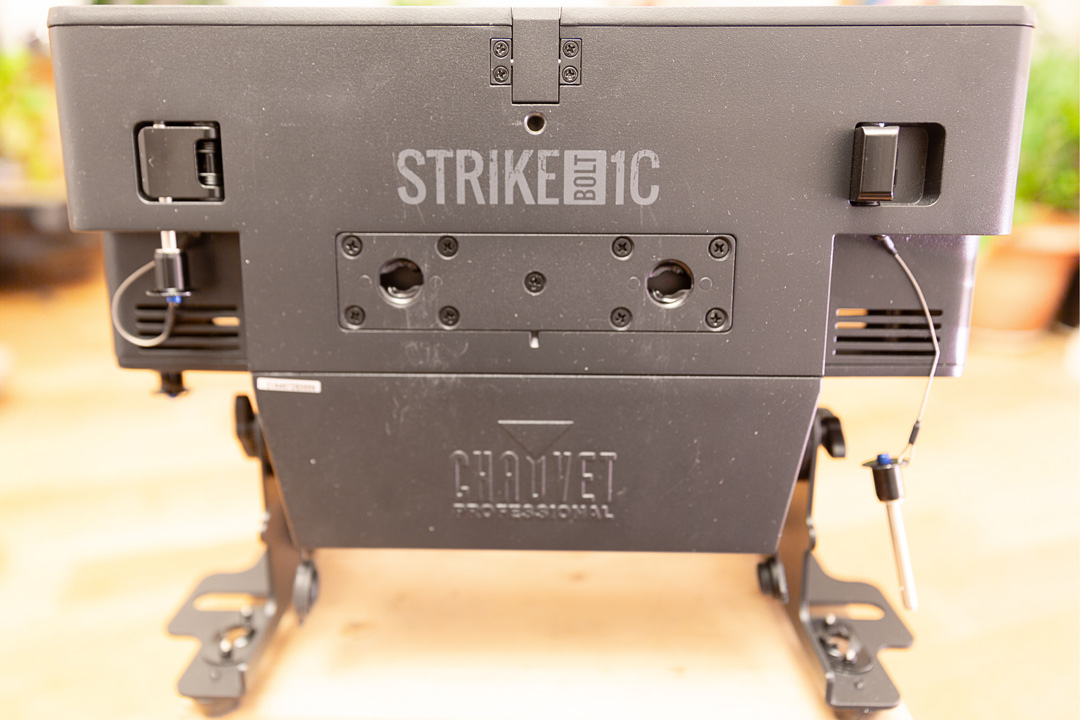
In addition to the two supports which also serve as “floor mounts”, 2 holes for Omega ¼ turns at the rear will allow the sources to be assembled side by side to create a matrix for example and two holes for Omega ¼ turns above for hanging on a truss or pipe.
My first favorite, even before turning on the fixture, is its compatibility with the Strike Array mounting system. The concept is astonishingly simple. Everything fits together and comes together very easily, with no external parts to add and it remains discreet when not in use. Truly flawless if we add that there are hooks on all sides, so we can give free rein to our imagination.
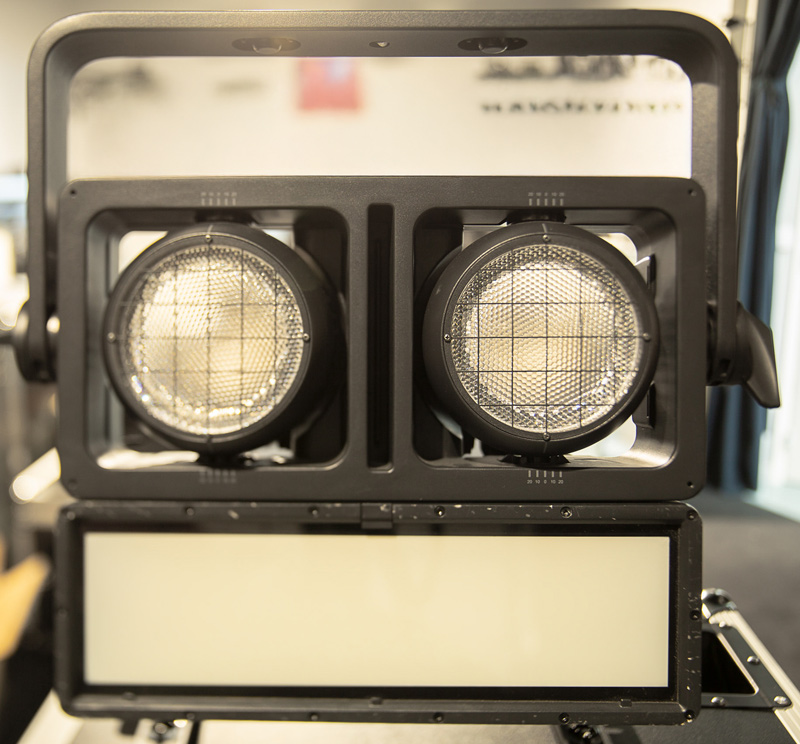
.
On the inside
To keep a constant pressure, any leaks must be prevented and a large number of screws distributed around the panel ensure optimal sealing. On this type of source, except to correct a configuration error or change a defective cable, it is preferable to provide spares in the event of a problem during an event.

The Strike Bolt opens into 2 independent parts depending on what you need to do. We start at the top by removing the glass that protects the LED matrices. The latter is also an important element of the fixture.
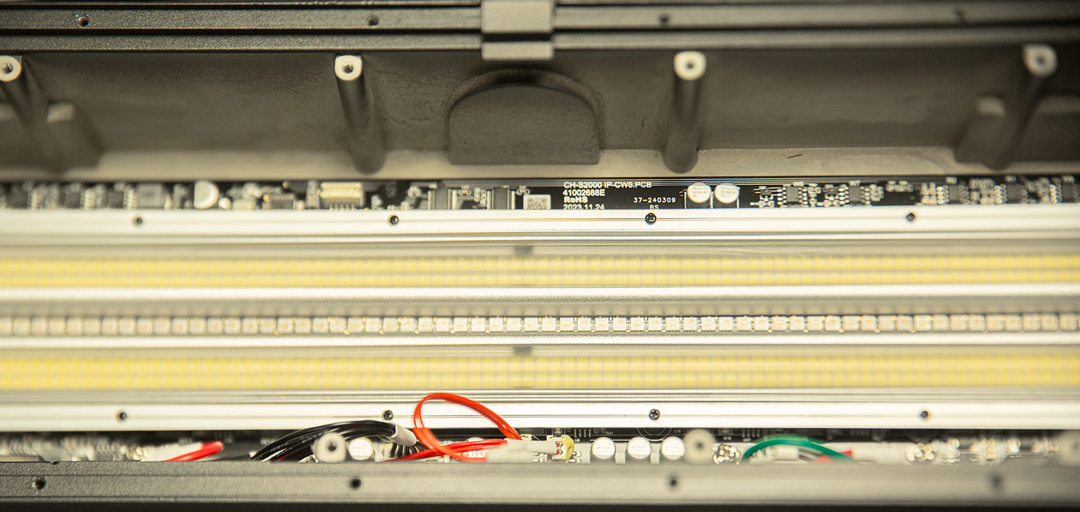
All of the LEDs are installed on the same electronic card. They are divided into 3 lines, in the center are the 66 RGBA SMD 5050 LEDs, 0.9 – 1.5 W. Looking closer we can see the 4 shades Red, Green, Blue, and Amber of each chip. They are surrounded by 392 white LEDs (2 x 196) of 1.5 W and 5660 K.
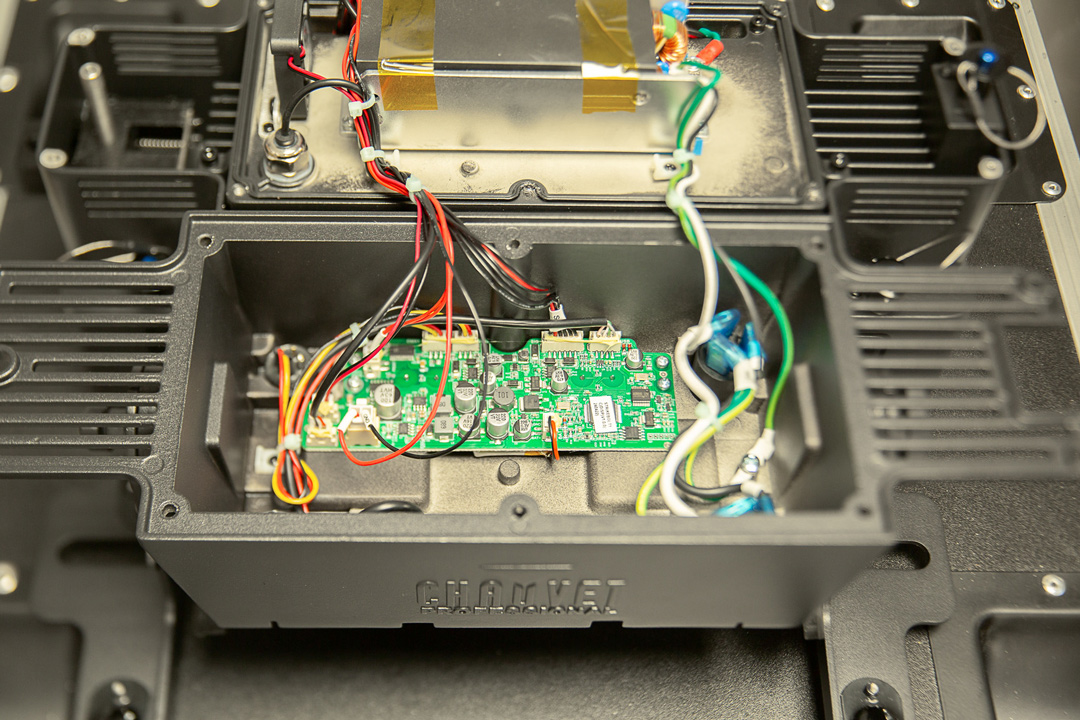
We then dismantle the second part which includes the rear ventilation grille of the two side parts (the pressure is only constant in the central part) and the square block.
Inside, on the LED source side, therefore on a plate located behind the electronic card, there is a power supply and in the block a second card where the DMX sockets are connected.
Back together again
A bunch of screws later, we are proud to have put everything back together, especially Nicolas Pommier at the after-sales service because we just watched him and encouraged him a little. We were able to see that the fixture works even without “reinflating” it, but be careful it is not IP65 and nothing indicates the lack of pressure (Be careful, if there is not enough pressure the fixture is no longer waterproof). Before turning the fixture on, you can add the Stealth Filter provided which reduces the shine of the transparent front plate. It is an interesting accessory for TV sets/studios or for a more discreet integration into a stage set or at the back of the stage (upstage).
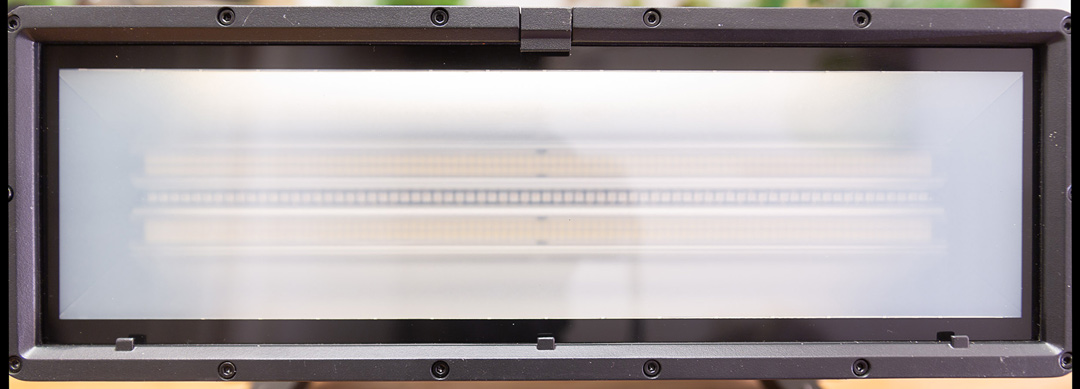
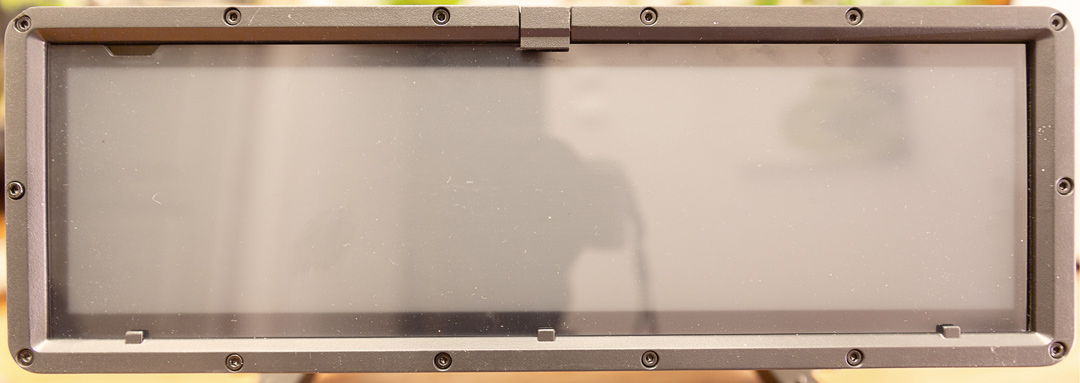
Since my PC controller doesn’t have a physical DMX output, I had to resort to an old trick and turn a 2Port Node Pro into an Artnet/DMX interface. To control the Strike Bolt’s functions, there are 8 DMX modes ranging from 10 to 40 parameters. Having a complete universe at my disposal and 1 single source, I of course opted for the most possibilities. I advise you to read the manual a little before starting, there is nothing complicated but it allows you to understand the philosophy of the fixture and know all the functions.
With this mode, we have many possibilities such as, for example, 3 Dimmers, a general one, one for white LEDs, and another for RGBA LEDs. It’s very practical for managing the level of each source at any time or dimming the entire fixture. This is not a luxury because the 588 watts of the central matrix are not there just for fun!
Like an idiot, I went seamlessly from 0 to 100 and it’s not fun at all! We have intense white light and a beautiful aperture. With its 99 watts, the brightness of the colored LEDs is of course more modest, but no less very interesting. The shades are beautiful and homogeneous. You can also work on saturated tones or, on the contrary, light pastels. Even if color is not the main function of this source, it provides a real plus.
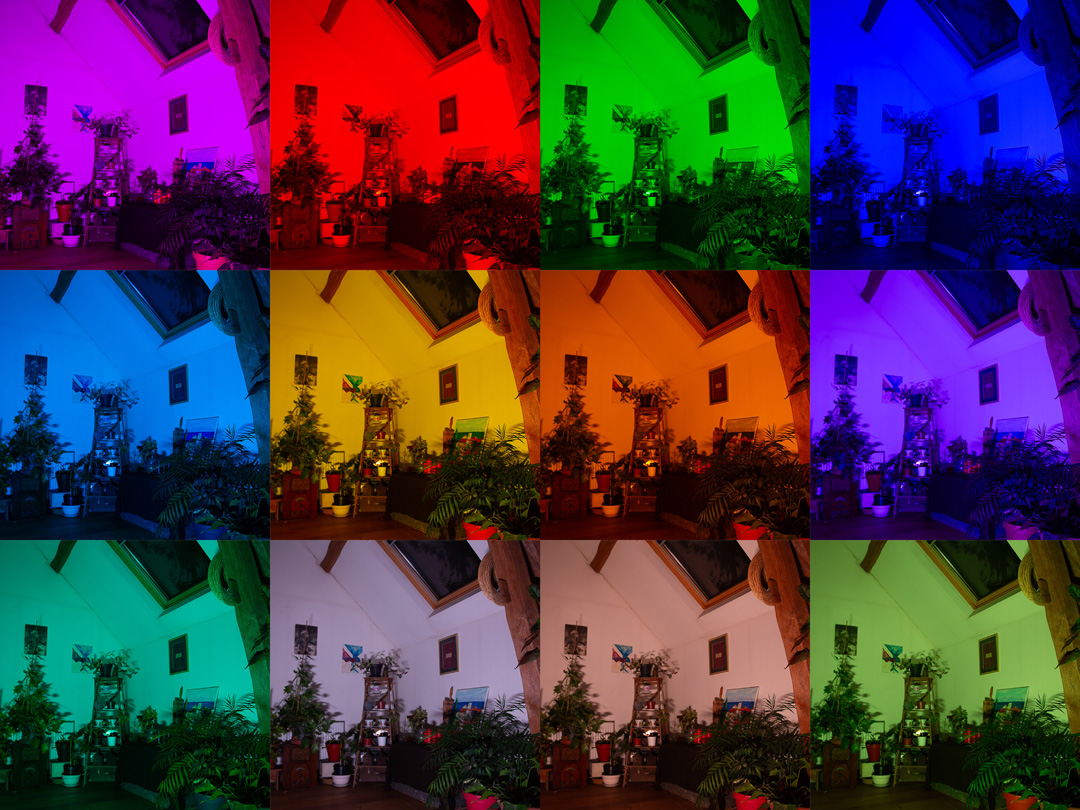
The Strike Bolt is an effects fixture and it takes on its full meaning with the superposition of the two matrices. You can alternate bumps of color with punches of white. You can integrate very light waves of white into a solid color or, on the contrary, completely erase the color with a large flash that is as powerful as it is brief. It is at this moment that we begin to understand the interest of the 3 dimmers. I advise starting in this mode because the white LEDs can be divided into 16 sections plus 2 others for the RGBA part.
We have an internal effects generator on 2 layers (high line and low line). You can select one of the 89 sequences for each level, vary the direction and speed as well as the transition between steps. The internal effect generator is always a plus which allows you to quickly obtain effects but they are limited to each source. The best, in my opinion, is to use an effects generator with a matrix. The main advantage is that you can work for a source, some of the fixtures, or for the entire kit and give a completely different dimension to the light.
It is also by creating effects with several fixtures that we will add interest to the color parameters. Individually, having 2 sections limits the possibilities but if we take all the sources in a matrix we end up with a giant checkerboard and a multitude of effects with the evolution or gradient of colors. What I like about this type of source is that you can transform the look without changing the kit or adding other fixtures.
The last function adds another option that fits this idea perfectly. Chauvet used an LCD plate to opacify the glass placed in front of the source. This Smart Frost function is incredible. Not only can we have a diffuser but it is also 100% dimmable! This also allows you to go from clear to diffuse instantly or with a delay. This is also a good function for creating color moods on your stage or making colorful backgrounds or backdrops.

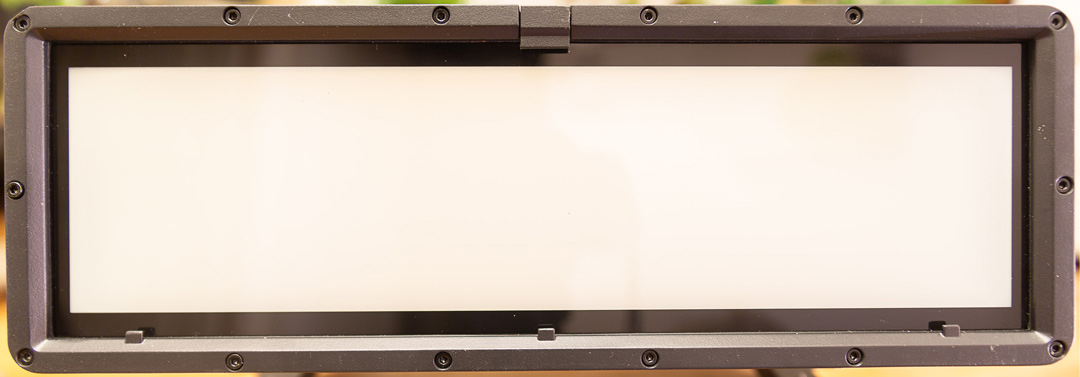
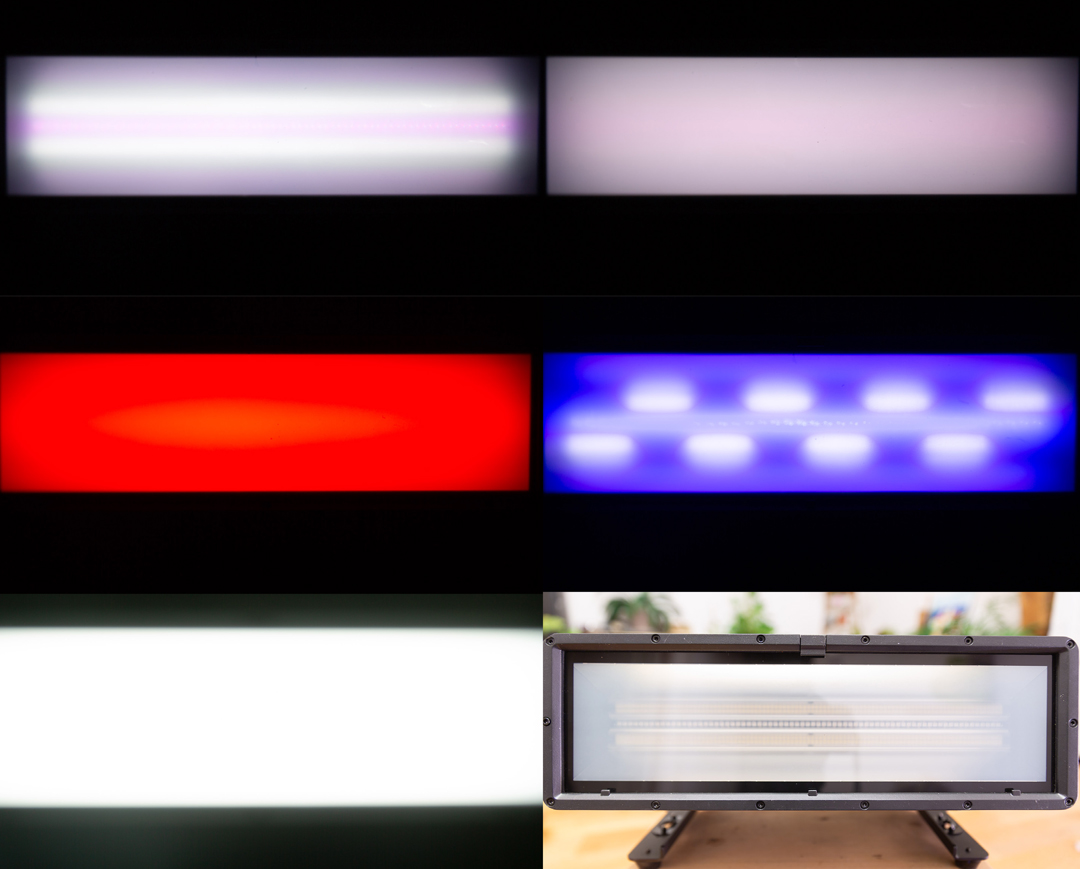
.
On the white screen of my dark nights
Even though the Strike Bolt can do many things, it is considered an effect fixture. For this type of source, efficiency is a priority, without neglecting the quality of the light. The proof comes from the first test. As always, it is the derating, to check how the LED matrix reacts as it warms up to the operating temperature.
We turn on all the sources and from the first seconds we have an excellent surprise, the brightness remains practically identical, within 2 lux, during the first minute. For a fixture that is not supposed to stay on for more than 1 or 2 seconds, this is already very surprising. In the next 4 minutes we only lose 1.06% and will never exceed more than 1.81%. We could say that there is no derating because we carried out the test to the maximum of its possibilities, a case which is never supposed to happen.
It is impossible to carry out our photometric measurements for a strobe as the diffusion angle is so wide. We were able to measure the illuminance at 5 meters at the brightest point. It reaches 790 Lux which is what is written in the manual which announces 729 lux for the Beam part and 66 Lux for the colors. With all LEDs on, we measure a CRI of 82 and a color temperature of 6240 K.
As far as colors are concerned, green dominates with 84 lux, followed by red at 46 lux and blue at 12 lux. Amber is 64 lux. The illuminance measurement of the 4 colors at 100% being 65 lux, I suppose there is a limitation either to control the temperature or to have a homogeneous white rather than an unusable mixture of colors.
Video presentation by David Howard, Lighting Designer
A “strike” of genius
The Strike Bolt 1C is a very interesting fixture. Totally adapted to current demands, it is powerful, multifunctional, innovative, and well-placed in terms of price. The strobe, the color, the smart frost, the matrixing effects, the modularity, all this contributes to making this source unique. The light output is there, the colors are beautiful and the addition of the progressive frost is an asset compared to the competition.
The plus side is the use in a matrix because alone or combined with a Strike Array blinder it is a real asset for giving dynamics and enhancing a stage or a TV studio set! The entire Chauvet France team is waiting to help you discover the Strike Bolt 1C, but be careful, to try it is to adopt it! (I’m talking about the fixture (but also the team…))
 What we like:
What we like:
- Its versatility,
- Its power,
- Its adaptability.
 What we regret:
What we regret:
- The small size of the LCD screen

